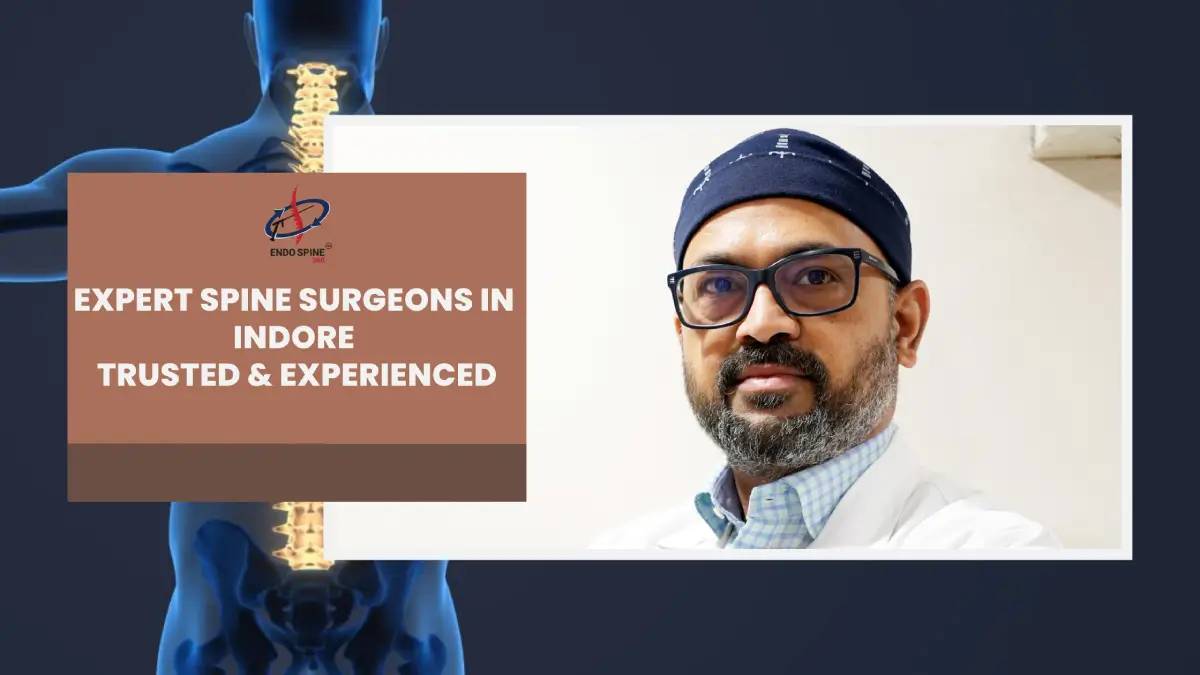Is There a Link Between Neck Pain and Headaches?
- Admin
The correlation between headaches and neck pain can be complex, and it's not always straightforward to determine whether one is causing the other. At Endospine360, our team of neck and spine specialists is well-versed in diagnosing and treating conditions where headaches and neck pain coexist. Let's delve into the potential reasons behind the interconnection of neck pain and headaches.
The relationship between neck pain and headaches may be bidirectional, with each potentially influencing the other. Neck pain can trigger headaches, and conversely, headaches may contribute to problems in the neck. Additionally, these symptoms might also stem from unrelated issues, making it essential to consider both possibilities.
As specialists in neck and spine health, we stay current with the latest insights into these connections. Through a thorough examination and diagnostic process, we aim to pinpoint the underlying causes of your symptoms. Whether it's a tension headache originating from muscle tension in the neck or a neck issue exacerbated by headaches, our expertise allows us to tailor effective treatment plans to address both components.
If you're experiencing the tandem challenges of headaches and neck pain, seeking professional evaluation is crucial. Our team is dedicated to understanding the intricate relationship between these symptoms and providing comprehensive care to alleviate discomfort and improve your overall well-being.
Cervicogenic headaches, characterized by symptoms in the head originating from the neck, are termed as secondary headaches, indicating an underlying cause of which the headache is a symptom. Potential origins include injuries like whiplash, bone fractures, arthritis, infections, tumors, or severe high blood pressure. Unlike primary headaches such as cluster or migraine headaches, where the headache itself is the condition, cervicogenic headaches are secondary to an underlying issue.
Typically affecting one side of the head, cervicogenic headaches start in the neck, progress up the back of the head, and extend to the front. Additional symptoms may include pain around the eyes or radiating pain down the shoulder and arm. Certain neck movements can also trigger head pain.
Stress, a common factor, can manifest physically as muscle tension, particularly in the neck and shoulders. Chronic stress, often associated with high-strain jobs, may lead to tension headaches, compounded by poor posture.
The headache response can become a cyclical process where a headache may initially originate in the head, elevate stress levels, and increase muscle tension in the neck and shoulders, further contributing to the pain load.
Unbalanced postures resulting from prolonged sitting or standing can lead to issues in the cervical spine, contributing to cervicogenic headaches. The use of digital devices, requiring a neck-forward posture, can also induce tension in the neck's soft tissues, serving as a headache trigger.
Tips to Relieve Headaches From Neck Pain
Relieving headaches caused by neck pain involves incorporating lifestyle changes and targeted strategies. Here are tips to help alleviate such headaches:
Improve Workplace Ergonomics:
- Adjust the height of your monitor to eye level to prevent strain.
- Choose a chair of appropriate height, ensuring your feet rest flat on the floor.
- Use a stand for paperwork to maintain eye level and avoid constant neck bending.
Improve Your Posture:
- Be conscious of your posture while standing, pulling in your stomach and pushing shoulders back.
- Sit with support behind your back to prevent slumping forward.
Improve Your Sleep:
- Support your head and neck by sleeping on your back or side with a supportive pillow.
- Establish a consistent sleep schedule and engage in relaxing activities before bedtime.
Exercise More:
- Opt for low-impact activities like yoga or gentle stretching to calm the body.
- Incorporate light cardio, such as walking, to reduce stress levels and ease headache pain.
Schedule a Massage:
- Consider a massage to relax neck muscles contributing to headache pain.
- Research and choose a massage therapist experienced in addressing head and neck pain.
Manage Your Stress:
- Practice relaxation techniques like deep breathing, massage, and exercise.
- Set boundaries, delegate tasks, and create time for enjoyable activities.
- Use journaling and to-do lists to alleviate stress and manage responsibilities.
Try Heat and Cold:
- Apply a cold compress or ice pack for 15 minutes with a 15-minute break for migraines.
- Use a warm cloth or heating pad for tension headaches and neck pain.
Adopting these practices can contribute to the reduction of neck pain-related headaches. If symptoms persist or worsen, consult with healthcare professionals at Endospine360 for personalized diagnosis and treatment options. Schedule an appointment by phone or online to address and manage your headache and neck pain effectively.
Diagnosing and treating these complex interactions is a specialty at Endospine360. If headaches are disrupting your life, we offer comprehensive diagnosis and treatment options. Schedule an appointment today by contacting us via phone or online to regain control over your well-being. Through our personalized approach to treatment and a strong emphasis on patient education, we are confident in our ability to provide you with the optimal care for your spinal condition, empowering you to live life to the fullest.
Search
Categories
Popular Tags
Recent Post
-
Top spine hospitals in surat offering endoscopic & minimally invasive surgery

Back and spine problems can affect your daily activities, mobility, an...
Read more -
Spine health matters: trusted surgeons and specialists in surat

Your spine plays a vital role in supporting your body, enabling moveme...
Read more -
Back pain solutions in indore: meet the leading specialists & consultants

Back pain is one of the most common health issues today, affecting peo...
Read more -
Back pain specialist insights: common causes and advanced solutions

Back pain is one of the most common health issues affecting people of ...
Read more



